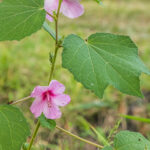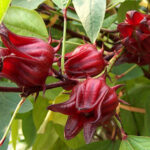Below are some of our prominent plants

Butternut squash, known for its sweet flavor and creamy texture, is a popular winter squash variety used in diverse culinary dishes worldwide. Rich in vitamins, minerals, and antioxidants, it offers numerous health benefits, including support for eye health and immune function. Cultivated in warm, sunny environments with well-drained soil, Butternut squash vines spread extensively and produce fruits ready for harvest in late summer to early fall. With its cultural significance and versatility in both savory and sweet recipes, Butternut squash remains a cherished ingredient in kitchens and holiday meals globally.

Stevia is renowned for its intensely sweet leaves, which contain natural compounds called steviol glycosides, providing a calorie-free alternative to sugar. Widely cultivated for its sweetening properties, stevia has gained popularity as a natural sugar substitute in various food and beverage products, contributing to reduced calorie intake and improved health outcomes. With its ability to thrive in diverse climates and soil conditions, the stevia plant offers a sustainable solution for individuals seeking to reduce their sugar consumption while enjoying sweet treats guilt-free.

Dried sea cucumber is prepared by dehydrating fresh sea cucumbers through a meticulous drying process. Renowned for its unique texture and umami flavor, dried sea cucumber is often rehydrated and incorporated into soups, stews, and stir-fry dishes, lending a rich and savory essence to culinary creations. Highly prized for its purported health benefits, including promoting joint health and boosting collagen production, dried sea cucumber is cherished for its culinary versatility and nutritional value in gastronomic traditions worldwide.

Torch ginger, also known as Etlingera elatior, is a tropical plant celebrated for its striking inflorescence resembling a flaming torch, boasting vibrant hues of red, pink, or orange. Native to Southeast Asia, it is esteemed for its ornamental beauty and culinary uses, with its flower buds and young shoots featuring prominently in various Asian dishes, imparting a zesty flavor and floral aroma. In addition to its culinary appeal, torch ginger holds cultural significance in traditional medicine and rituals, reflecting its multifaceted role in Southeast Asian cultures.

Amorphophallus abyssinicus (voodoo lily), native to East Africa, is a fascinating perennial plant known for its large maroon inflorescence resembling a regal vase, emitting a pungent odor to attract pollinating flies. Its deeply lobed foliage adds a tropical touch to botanical collections, thriving in warm, humid conditions, and showcasing its cultural significance among indigenous communities in South America.

Gold Dust Japanese Laurel (Aucuba japonica ‘Variegata’) is a striking evergreen shrub prized for its glossy, gold-splashed leaves, adding vibrant color to shaded areas in gardens. Native to Japan, it thrives in moist, well-drained soil and partial to full shade, making it a popular choice for landscaping in temperate regions. With its bold foliage and low-maintenance nature, Gold Dust Japanese Laurel brings year-round visual interest and texture to garden landscapes and container plantings.

Caesarweed (Urena lobata) is a robust perennial plant known for its rapid growth and invasive nature, often found in disturbed areas and along roadsides in tropical and subtropical regions. With its hairy stems and pink to purple flowers, Caesarweed can quickly form dense thickets, impacting native vegetation and biodiversity if left unchecked. Despite its invasive tendencies, Caesarweed has cultural significance in traditional medicine and as a source of fiber for crafting.

The Pincushion tree, also known as the Leucospermum, is a striking evergreen shrub native to South Africa, admired for its vibrant, pincushion-like flower heads that bloom in a spectrum of colors ranging from fiery reds to sunny yellows. Thriving in sunny, well-drained soils, it attracts pollinators such as birds and bees, adding a burst of color to garden landscapes and floral arrangements while symbolizing resilience and diversity in the botanical world. Renowned for its drought tolerance and unique floral display, the Pincushion tree holds cultural significance and botanical allure, making it a cherished addition to gardens worldwide.

Common Lantana (Lantana camara) is a colorful and resilient flowering plant native to tropical regions, prized for its clusters of vibrant blooms that range in hues from pink and orange to yellow and purple. Thriving in sunny locations with well-drained soil, it attracts pollinators such as butterflies and bees, adding a cheerful and lively presence to garden landscapes and containers. Despite its ornamental appeal, Common Lantana can become invasive in some areas, spreading rapidly and displacing native vegetation if not managed properly.

Pariparoba (Piper umbellatum), a medicinal herb native to the Amazon rainforest, is esteemed for its broad, heart-shaped leaves containing potent anti-inflammatory and antioxidant properties, traditionally used in herbal remedies for ailments such as arthritis and digestive issues. Its pungent aroma adds depth to culinary dishes, reflecting its cultural significance among indigenous communities in South America, while its lush foliage contributes to the biodiversity and ecological balance of its native habitat. Renowned for its versatile applications in traditional medicine and culinary practices, Pariparoba embodies the rich botanical heritage and healing traditions of the Amazon rainforest.

Wax Mallow (Malvaviscus arboreus), also known as Turk’s Cap, is a versatile perennial shrub admired for its vibrant, hibiscus-like flowers, ranging from pink to red, attracting hummingbirds and butterflies. Its glossy foliage provides a lush backdrop in gardens, thriving in partial shade and well-drained soil, making it a popular choice for landscaping in subtropical and tropical regions. Renowned for its resilience and ornamental beauty, Wax Mallow adds a touch of elegance and wildlife attraction to garden landscapes, symbolizing vitality and botanical diversity.

Hairy Beggarticks (Bidens pilosa) is a resilient annual weed with slender stems and small, yellow flowers, often considered a nuisance in gardens and agricultural fields due to its prolific seed production and ability to quickly colonize disturbed areas. Despite its pesky reputation, it serves as a valuable food source for various pollinators and wildlife, contributing to ecosystem diversity. Its tenacious growth and adaptability underscore its role in ecological succession and its ability to thrive in a wide range of habitats.

Roselle (Hibiscus sabdariffa) is a tropical plant cherished for its ruby-red calyces, which are used to make a tart, cranberry-like beverage popular in various cultures worldwide. Thriving in warm climates with well-drained soil, it also offers culinary versatility, with its leaves and stems used in salads, soups, and teas, while its vibrant flowers attract pollinators to gardens and agricultural landscapes. Rich in antioxidants and vitamin C, Roselle not only delights the palate but also provides nutritional benefits, making it a valued addition to both culinary and medicinal practices.
